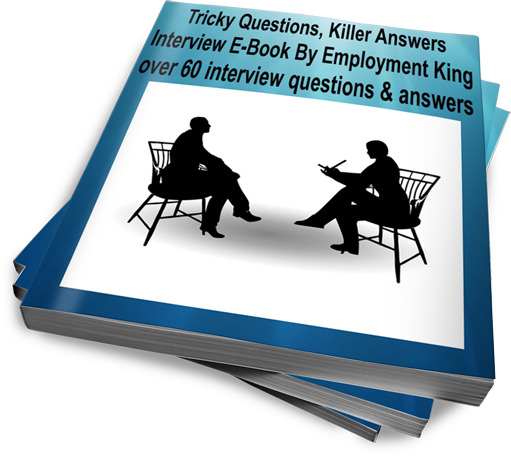The concept of Organisational culture
Each company has its own personalised company culture, its own personality. The company culture is the attitudes and behaviours of the company and its staff members; how employees interact, make decisions and what they value. The culture of a company directs employees, directly and indirectly, on how they should behave.
Some organisations purposely, through their mission, vison, values and processes, create their desired culture, “mission relates directly to what organisations call ‘strategy’ To fulfil its manifest and latent functions, the organization evolves shared assumptions about its ‘reason to be’ and formulates long-range plans to fulfil those functions. That involves decisions about products and services and reflects what could usefully be called the ‘identity’ of the organisation (Hatch and Schultz 2004)” (Schein, 2010) This ‘visibility’ helps with, as an example, recruitment, as applicants can clearly understand the desired culture the organisation is trying to create or has created.
‘Invisible’ culture also determines how a workplace operates and the attitudes of their employees. The accumulation of business decisions, or what the company prioritise, as an example, shape the culture of the company and how employees themselves make decisions and act.
Employees, knowing how management require them to act, can make better informed choices as the beliefs of the organisation are embedded in the strategic structure of day to day activities. “A culture is not a painted picture; it is a living process, composed of countless social interactions. Like a river whose form and velocity are determined by the balance of those forces that tend to make the water flow faster, and the friction that tends to make the water flow more slowly the cultural pattern of a people at a given time is maintained by a balance of counteracting forces.” (Lewin, 1948)
To contrast two different cultures, a top-down organisation would expect employees to follow instructions and not to question the status quo. Gordan Ramsey, who has an Authoritativemanagement style, employs a top-down approach to ensure consistency in the dishes he produces as required for the Michelins star rating hew receives for his restaurants. His staff must follow his processes and rarely have a say in the creation of new dishes.
In contrast, a widening participation project, often utilising a matrix management model, will have customer and employees at the forefront of the decision-making process. Employees in this example, who interact with customers daily, are viewed more as partners, equals, than as a labour force that creates output.
A top down vs bottom up culture has a direct effect on employees’ motivation, stress, and what behaviours the employees can show within the workplace. Two top down companies may on the service have similar cultures but when scrutinised, differences in culture can be viewed. The fire service require staff to wear a uniform, accept risk, dress appropriately and have a certain level of fitness, compared to a bank who require honesty, profit making and professionalism.
The culture, created from the vison, values and expectations, can create differences on a smaller scale. Workplace language, as an example, can vary with ‘humour’ being allowed in the fire service as one way to release the stress of being in life threatening tasks but not seen as appropriate in the financial sector where logical and professionalism is seen as a required skill.
The traits of power culture, role culture, task culture and person culture
Handys model of organisation culture states there are 4 types of culture: power, task, person and role. The model explains the various ways a business expects the employees to make a decision.
Power culture
As an example, the power culture has a small number of ‘powerful’ (often senior leaders) making all the decisions before delegating tasks, without the opinion of employees, to teams or individuals. An army operates using this style of culture making quick rapid decisions in times of need.
Power cultures attract power hungry career professional, individuals who will take high risks – at worst people with psychopathic traits, and often an authoritative management style is part of the culture. But on the other side of the coin, an entrepreneur just starting out, having limited resources, may adopt a power culture to ensure their business is a success by following their prepared business plan.
The power culture results in quick decisive action, compared to the slower more open or shared process of a ‘task’ culture. On the opposite hand, the power culture doesn’t gain the combined knowledge, experience and input from their workforce, due to their top-down culture.
Previous examples of power cultured organisations in the financial sector has seen a lack of scrutiny in these top-down companies, as senior leadership decisions aren’t allowed to be challenged, as an example the collapse of Enron, Lehman Brothers and RBS is often said to have been affected by an embedded power culture.
Role culture
Whereas the ‘role’ culture allows individuals, who have specialised skills, creating person accountability, to make decisions based on their experience and knowledgebase.
In the construction industry, where many specialised workers are required when building a new housing estate, the role culture works well as individual skilled workers make decisions for the objectives they are set. In this way, the role culture could be seen as a mini-power culture, but the actions from decisions, in terms of workload, end with the specialised worker, compared to the power culture model where decision effect, depending on the size of the organisation, a large number of employees.
In the main, the role culture has a focus on the ‘role’ not an individual. The specialist roles are required for a successful business, with leadership given from a small leadership team. The specialist then makes the decisions by following set processes attributed to their roles; a cog in the system. 3rd sector organisations often adopt a role culture which is often successful in a steady market or when future problems/challenges can be predicted. But if a crisis was to happen, the lack of direction, leadership, and authoritative managers, as the culture attracts a more laissez-faire manager, can result in disaster. A small organisation, with a role culture, would struggle if one or mor experts left or became sick, as specialist from other roles wouldn’t have the required knowledge or experience to be of assistance in the missing ‘role’.
Due to a lack of leadership, even when a project manager is in place, a role culture can create problems as individuals feel they need to answer to anyone but themselves. Returning to the construction example, if, for example, the electrician hasn’t accurately planned their time, or foreseen problems that delay for the duration of their task, a costly knock on effect could happen as the plasterers, painter and decorators and carpet fitters are all delayed.
Another barrier is the change process required by organisations. In a power-culture change can be rapid but in a role culture, due to the individual specialist the implementation of company change can take a longer duration and maybe challenged.
Task culture
‘Task’ culture is the formation of teams created to achieve a KPI or project objective. As a collaborative culture, specialised staff join up creating a team that contribute to the overall objective “Decision acceptance refers to the motivation and commitment of group members in implementing the decision” (Mullins, 2005) Project management often adapts this style of culture, as do matrix style management systems.
Within a project team the specialist, unlike the experts working in a role culture, come together to discuss their collaborative objective. The task or ‘team’ approaches allow shared experiences and knowledge to shape the required tasks and resources. As an example, the recent government funded NCOP programme required different stakeholders to collaborate to produce a programme of higher educational aspirational activities that would impact on the progression of high school and college pupils.
Each stakeholder had a different responsibility and ‘task’, and individually couldn’t meet the project objectives. By working together, embedding a communication plan, being clear and honest, and following a strategic plan (where tasks can be reformed, abandoned, or agreed upon), key performance indicators could be achieved. If one stakeholder failed to action their required steps to achieve their own KPI, the project could stall or even fail. Therefore, each stakeholder or team had their own expertise, operational plan, and reward system.
NASA is another example of a task culture. In the 1960s NASA, working collaboratively with several agencies who all had individual objectives to achieve, were able to put a man on the moon.
Without direct leadership, as seen in a power culture, unless an assertive manager has been appointed, arguments, creating loss time, can breakout about the most effective way forward or from differences of opinions. Resources, as an example, when in demand can create a competitive edge between the different working groups dissolving the feeling a ‘team’ approach.
Person culture
The rise in take away delivery firms such a Deliveroo employ people on a self-employed basis, or in years gone by factor workers paid piecemeal, has seen an increase in ‘person’ cultures. In a person cultured organisation, the employee is loyal to their self rather than a company.
In a task culture, the team long for success as this may increase company income securing their position. Some organisations, like Apple, have built a culture where employees feel proud to be an Apple worker.
With a person culture, the company is second to the values of the employee. Uber driver, as an example, will finish work when they want to, even if there is a number of pick-up requests in their area without thinking about the impact of the waiting time of a customer on the company brand.
These examples show how different culture are required for the different job sectors or business models. What is important is that the culture and processes supporting the culture, is clear to employees, helping to create confidence in their actions.
Internal and external factors that can influence organisational culture
Employees
Employees being one, if not the most, asset is an internal factor that influences the culture of an organisation.
A security company hiring ex-military personnel is likely to have a culture shaped by the attitudes of their staff, which for service people is likely to be one of following rules, processes, and orders. It is unlikely, therefore, that employees in this example would be late for work.
Whereas an organisation hiring graduates will create a culture of competition as a potentially younger workforce is wanting to impress managers and enhance their career opportunities.
New challenges to cope with potential future problems can result in a cultural change. Employees, going through a change process, can’t be expected to adapt naturally to a new culture. This same barrier is prevalent when a new management team is brought in to make rapid changes for organisations who are in financial trouble.
If, in the main, employees are unhappy with the change they can disrupt production. Even without a new organisational change, if the percentage of employees take a disliking to the company culture they can rebel or make their grievances known. During 1980s many trade unions strikes cost businesses a high percentage of their profits.
It’s during a change period where managers need to adapt their managerial and leadership styles as they take employees through Lewin’s 3 phase process model; unfreeze, movement, refreeze, due to the resistance of change. A change model helps the process, as research suggest that there is a resistance to change from both the organisation and employees.
Processes, procedures, company values and the company mission, supported by training, help to shape the organisations culture. Without these, or if the guidelines fail to be effective the personalities, and the behaviour of employees can shape the culture of the company through stories, mentoring and what is viewed as ‘normal’ day-to-day activities taken on by new employees through observational learning.
Recruitment
Organisation control who they hire. The recruitment of one unsuitable individual, in terms of company culture, can have a negative effect on the whole team and the behaviours of other staff members, and therefore output.
Recruitment is controlled by the organisation, as long as the hiring manager follows employment law they can, essentially, hire who they believe are the most suitable candidate for the advertised role. “The business of replacing or recruiting someone is an opportunity to rethink what we want the content of the job to be” (Weightman, 1999)
Strength-based interviewing, as an example, matches the applicant’s preference and preferred style of working to culture of the organisation, compared to situational and behaviour job interviewing which focuses, mainly, of competencies for the job role.
High skilled and suitable (new) employees, can also impact the company culture due to the culture of the country they grew up in. Hofstede’s cultural dimension theory, explains how one member of staff is more likely, due to the country culture, generically speaking, perform well or poorly within a particular organisation, depending on that organisations culture.
China, as an example, is what Hofstede would define as a ‘high power’ – an authoritative leadership style, where citizens, or employees, accept the hierarchal order. This temperament would do well within a ‘power’ culture.
If a number of employees are strong in one of the 6 dimensions the culture of the organisation will change. As an example, during a large recruitment process a high percentage of employees were hired from a country that scored low on the time orientation dimension, and therefore preference time served processes and dislike change. If the hiring company was an ‘innovative’ organisation, the culture of wanting to avoid changes would have a direct effect on the values of the company which could change their decision making processes, due to the behaviours of the majority of the workforce.
Resources
Herzberg’s motivation theory model states that there are 2 types of factors that an organisation can adjust to influence employee motivation: motivators and hygiene factors.
Without the hygiene factors, staff members will become demotivated, affecting the company culture. The lack of essential equipment, as an example, that is fit for purpose, changes the productivity levels of an employee. If feeling unworthy, a team member will lack the motivation to stay enthusiastic. The, now negative, attitude can have a disruptive effect on other team members.
Having the required resources can be seen by an employee and being valued. Not only does fit for purpose resources help complete job-related task and therefore meet project deadlines, it creates the culture of satisfied employees.
Another example of employee dissatisfaction is from the employee’s salary. If a salary is perceived to be ‘low’ the employee can become dissatisfied. The UK governments 2020 mean gender pay gap analyst shown how there is a 6.5% gap between male and female salaries.
Organisations, who by law, have to send gender pay gap details to the government, if they employ over 250 employees can reduce dissatisfaction from female employees by simply matching their pay to that of males. Companies, now more then ever before, are reviewing their salaries and comparing them to the average sector salary for that position and/or have a salary scale that increases year on year allowing loyal employees to receive a guaranteed increase in pay.
Politics
Politics, in a number of ways, impacts culture, from the direct influence of policy and law to economical factors. The recent covid-19 pandemic has resulted in advice and guidance, as well as laws that have directed how certain organisations can operate during ‘lockdown’ periods.
These directions or legislation create the boundaries that a company can move, with examples of restaurants offering a home-delivery service or bars hoping to get around rules selling scotch eggs (as government stated that a scotch egg was sufficient enough for a bar to be seen as selling drinks with a meal)
Another recent example is schools, due to Covid, teaching pupils virtually. Schools to continue to meet government benchmarks were required to quickly adapt to the pandemic to continue the education of the pupils. Some schools acted pro-actively creating a risk assessment, identifying, as an example that some pupils, who were part of a large family unit, lived in a one computer home reducing the access they would have to the required technology. Other schools, acting re-actively (maybe due to working within a power culture) were late to identify such issues, delaying the access to the resources their pupils required.
Policy, therefore, affects the behaviour of an organisation. Politics is also designed to be ‘fair’ ensuring that one organisation doesn’t have an monopoly on an industry niche, or, as we are currently seeing, we review policies when weaknesses in the system are found such as global organisations paying tax in countries that they are ‘based’ in but don’t sell products or services in.
Competition
A new entry to an established market can change the culture of an organisation as they will be highly motivated adapt to stay competitive. Amazon, as an example, change the retail market as they successfully turn an online bookstore into the number 1 online retailer.
High street retailers were slow to move online, even with positive projections for foreseeable online shopping trends, with many large retails closing down – most recently Debenhams.
Competition is also positive as one brand can ‘test’ a new marketing idea or product, and if purchased by the public, the second brand can imitate this product. Pepsi and Coke Cola are known for following each other successes, with an example of this is Pepsi bringing out 2lt cola bottles in 70s only to be followed by Coke Cola.
Competition is a driver for change, and therefore a driver for company culture change. Yellow pages, prior to access of internet access on mobile phones, had the monopoly on small business advertisements.
As the internet grew in popularity, the yellow pages didn’t make the move to fully incorporate the online market within their business model. As different online websites, often specialising in job sectors (ratemybuilder.com etc) helped customers find the services they required, Yellow Pages saw a drop in demand, resulting in a drop in share prices. Later, after making massive changes internally, the yellow pages were rebranded as yell.com.
Technology
Many organisational cultures are changing as machinery, technology or artificial intelligence enters the workplace. Companies that once valued hard work, reliability and accuracy can now focus on other values, as machinery produces consistent result, working from home and flexi-hours doesn’t require reliability and ‘hard work’ which originally was physical is more mental; creative, innovative and problem solving.
As low skilled jobs are becoming automated, high skilled roles, requiring degree level candidates and a new set of skills, change the culture of the workplace.
If machinery, as an example, doesn’t required the number of workers of years gone by, the workplace and therefore the company culture will naturally evolve due new environment created from the number of required humans.
This is being seen in the retail sector as decisions to increase self-service checkouts rather then employing humans to work tills increases. This decision could be viewed as a cost saving process but depending on the retail outlet the decision may have been taken to improve customer service with self-checkouts being a quicker alternative to human intervention.
Big data is a driver of culture change, as employers with access to large amounts of data are finding new ways of working, new ways of engaging customers and thinking new opportunities created through the data sets. For some businesses, big data has opened up new business opportunities that weren’t previously thought off.
Values and cultures that encourage behaviours consistent with organisational strategy
Several different approaches help an organisation achieve its operational strategy.
An example would be creating a culture of self-reflection. One company may complete annual appraisals, a discussion with a senior employee; supervisor, manager, senior manager whereas another organisation may utilise a 360-degree review to help generate reflection from different viewpoints.
The varying times of reflection activities allow an employee or team to stop thinking about the ‘now,’ the current stresses or any projects and objectives, and instead review their strengths, weaknesses, opportunities, and threats. The ability to reflect allows lessons learnt to be utilised in new and future projects decreasing risk.
To create change, one company may create policy whereas another will use nudge theory techniques. Each approach is designed to help employees to take on the new changes but approaches this from a different motivational standpoint. Nudge theory encourages change subconsciously, bypassing residence, and policy directs change, forcing a new way of operating, which can increase resistance as studies show that humans feel comfortable with routine.
A more direct route to encourage behaviour is encouraging the embedding of values into employees’ day-to-day tasks. Many educational organisations do this successfully through the communication of their values in everything that they do. Operational plans, when communicated will be explained under each of the company’s values. Appraisals are also designed to incorporate questions to ask how an employee meets or uses the company values in business as usual task. Award systems are also set up, allowing colleagues and managers to reward employees who ‘live’ the company values.
Values don’t only inform staff members what the company stands for, they encourage decision making, especially when embedded into rewards, appraisals, and operational plans, that is inline the company mission and vision.
An employee retention focus, from an organisation perspective, creates a culture of ‘caring’. Creating an opportunity for employees to voice their ideas, problems or suggestions allows team members to feel listened to. In addition, hearing the employees voice, on, as an example, an unknown issue, raises that issue to the senior management team helping the company to quickly resolve something that if left could have resulted in a large-scale issue.
The communication of information, good or bad, fosters different behaviours. Having a comms plan that keeps all employees well informed, with an opportunity for the employee’s voice to be heard is, research shows, highly motivational. A lack of communication, half-stories or one employee learning of a change from another, can be frustrating affecting employees work performance.
Company communication process help create a culture on how communications are descended. For big events, one company use a mass email to communicate the update and another in a team meeting. The email is a quicker way to send information, but if the communication is ambiguous or doesn’t state enough information employees will spend time trying to understand the meaning of the email. A team meeting is more costly, as employees aren’t completing business as usual, but the live events allows confirmation of the communication through employee questions.
A culture of honesty and transparency allows all employees to feel in the ‘loop’. Attempting to ‘dodge’ employee questions or trick staff into thinking everything is OK when it is not, has a direct hit on motivation once the truth comes out. Distrust impacts production and staff retention. Stress can increase, adding to the number of sick days taken by team members.
Consistency is key here. Employers can’t be honest one moment and lack transparency the next.
Personal managerial behaviours and organisational values and cultures
To create a productive team, it is important for leaders to be aware of organisational culture forces that operate outside of employee’s awareness.
Leaders need to understand cultural forces to help understand people and how to manage them. These can include group norms, the language, customs, and traditions employees use/follow. How departments interact, unwritten rules employees have and the organisations principles. Additional items could be added to the list, but what is important, for leaders to understand, is that organizational cultures can be visible or invisible.
A visible example is the organizations principles can also be seen in their vision and mission statements, or a company process can reiterate what is seen as right or wrong.
Unconscious cultural norms can be invisible, these can include basic assumptions that guide behavior. Assumptions change the way an employee(s) think. It is easy for the brain to filter the world around us through these assumptions and beliefs, the mind will delete, distort, and generalize the world to fit the belief system.
If the culture in one organization was to stop, think and reflect to be creative, and a manager observed an employee staring into space, the manager would encourage this behavior. Whereas in an organisation with the opposite culture; work hard for every minute of every day, the employee will be viewed as lazy. Culture can create the filter – the bias used before an assumption is made, for decision making.
To motivate and inspire a team, different approaches are required for various situations. When leading a team, a consideration for the individual team member is required, their maturity (competence and confidence) and the task. It is also important to realize that an employee’s maturity can change overtime or can vary, depending on the environment/task.
Situational leadership theory contains 4 behavioral styles
Directing – this is a directive approach, where clear detailed communication and processes are used to ensure a key objective. An example of this would be working within the arm forces
Coaching – here the leader gives guidance in a directive way but also has a focused-on employees needs and motivation. This style works well on complex task and within a matrix management structure
Supporting – when an employee(s) knowledge and skills are key to achieving goals. The leader will use their people skills to support and motivate the team. This style can be seen in retail or the voluntary sector
Delegating – a hands-off approach where the leader has little involvement in the day to day task. This leadership style only works with highly competent staff. You will see this style in senior managers who have a reasonability to manage managers or project managers who oversee contractors.
A new team member will initially require a directive leader who will explain what they do to do, how they will do it and will deliver supportive observations. As the employee becomes more confident and competent, they will require a different leadership style, from directive to coaching, from coaching to supportive, from supportive to, once fully competent and confident, delegation. But this constant change of management styles, and therefore what is expected of the employee, can be confusing and disruptive.
The leader should continue to observe employees and change their leadership style if the employee goes from a delegation support need to another of the 3 leadership styles. Using this theory, a manager can support and motivate a team to achieve their KPIs. The natural tendency of a situational leader Is to focus short-term; observing employees and changing leadership approaches, but a short-term focused removes the focus away from the long-term objectives, which can result in irrelevant short-term goals.
Situational leader theory allows to managers to delegate more effectively, by knowing with employees can be given a task with no additional support or those who can be given task but will need the mangers time and knowledge to complete the task. In this sense a manager is delegating task based on the employee’s ability, confidence, and competencies. For repetitive tasks, this a situational leader wouldn’t be required. Also, to make judgements based an employee’s confidence and competencies, managers need to possess the skill of judging employees’ maturity, something many leaders can’t do.
To improve performance a leader can create an effective group by having beliefs in shared aims and objectives, commitment to the group and being able to openly express themselves.
How to communicate organisational values to the organisational
A newly recruited manager, coming into an established team can set tasks, deadlines or deliver communications that don’t have the desired result they want due to the culture in that particular organization.
Because cultures come from the beliefs, values and assumptions of the organizations,a leader should spend time understanding the complexity of a team and company.
With this knowledge a leader can change their communication to filter their goals effectively or reflect on their own values and change these to fit the culture of the organization – this is often a positive approach if the current team are achieving KPIs. If a new leader has been brought into due to, let’s say, low performance, the leader may first need to focus on a cultural change process.
To change a culture, a leader will need to change employee’s filters. To do this (Schein and Schein, 2017) states 6 embedding mechanisms; what the leader pays attention to – the repetition of this subconsciously teaches people the value of a new hierarchy. Reactions to critical incidents – crisis increase anxiety and how a leader responds teaches new values. The organization learns from this experience and repeats its new behavior.
The allocation of resources or where the money is being spent – indirectly, the priority of resources and funds embeds organizational values. A newly started company that valued profit would make decisions based on lowering overhead cost and increasing profit. Managers here, are likely to decline costly CPD request for team members. In fact, staff might not even request CPD knowing the likely outcome.
As the company grows and becomes financially successful, the company values may evolve with the company’s current situation. The development of staff skills (for long term success) is shown in the company’s new values for professional development, being a leader in the field, etc. Mangers now, are more likely to allocate parts of their budget to staff development and may even be encouraged to this by the senior team.
Another example is a small company who value quality over one who values a quick turnaround. The ‘quality’ company may be willing to extend project deadlines to ensure quality (and their reputation for quality) – a solicitors as an example, will delay the completion of a mortgage due to the checking of the details. A ‘quick turnaround’ company could make decisions based on the need to start the next job – a plumber may used an inadequate product, hoping ‘it will do the job’ to be able to finish the job and start the next one.
The allocation of resources creates a belief system “that won’t get accepted because of X” this soon evolves into how an employee act.
Deliberate Role Modeling – the way a manger acts has a direct impact on employees.
At a basic level values can be communicated by written values, forming a value statement, meetings and through verbal communication. An indirect method is through observational learning.
Staff members, through observational learning, will mimic managers. This has a big effect on the output. Imagine a manager who likes to start lots of new tasks compared to a manager who prefers to start and finish one task before moving on to the next one. Depending on the organization depends of which culture would work best, but employees observing, as an example, that a task must be fully completed before another project is started will mimic this behavior, even when deadlines are looming.
Rewards and status create motivation. Values are often taught through appraisals as they often state the values, and through seeing rewards being given and what the organization punishes. Awarding what you prioritize gets the message home quickly to all staff members.
How leaders select, promote and excommunicate – when working with a current team, the recruitment process, designed to hire staff with (new values), shows the current team, in a subtle way, what is to be expected of them.
This is reinforced when a promotion happens. A previous competent member of staff may miss a promotion over a new employee because the new employee, recruited due to having the new values, act in a way that suites the new organizational culture that is being created.
These can again be reinforced by the allocation of task. Task come with a varying level of responsibility, an experienced staff member being given low level task will (they and colleagues) know something is wrong.
To lead people, leader needs to understand their employees, what motivates them, their levels of competencies and the culture and values of the organization. Business as usual may be enough to keep the business productive and profitable or new changes may be required.
New changes can create stress which often requires more leadership from managers and big cultural changes can take time to be embedded. The actions of the leaders along with clear communication can explain what is required of a workforce and the direction the organization is taking. By leading a team, these changes can be motivational rather than stressful.

The tools available to an organisation to identify and develop its culture
Recruitment strategy
Job adverts and the job spec allow an employee to match the job role to their temperament, helping to assist the development of a culture, once employed. The organisations vision plays a role here. Being innovative, fast-paced and a leader in technology will encourage applicants with a certain mindset compared to a company who state that they are professional, well-established and process driven.
Research has shown that the number of criteria explicit on the job advert affects the employer’s ability to predict job performance. Job adverts, therefore, need to show enough of the company culture and job role to entice suitable applicants but not give too much away as unsuitable candidates may prepare high scoring interview answers in advance of the job interview.
With the company culture clear, employers can set interview questions that are designed to elicit the personal values, attitudes, and behaviours of a candidate. Interview questions can be phrased in a way that help to best understand the applicant’s skill set to the company culture. As an example, if the fast paced IT company need employees to always be working in new sectors or with unknown technology, situational – asking questions about future scenarios may be better than a asking behavioural interview questions – relating to past behaviours, which might not be suitable to their future job duties.
An equal opportunities employer may adopt a panel interview over a 1-2-1 interview are panel interviews decrease unconscious bias through collective hiring decisions. Some organisations, being aware of prejudice in the job interview, use ‘blind’ application removing an applicant’s name, DOB, ethnicity, and gender.
Additional training is carried out throughout the year for all staff teaching new knowledge, behaviours, and attitudes, all designed at one level or another to create a desired culture. Even resources embed culture. Amazon warehouse staff, as an example, have to wear an electronic tag that trigger when a staff member is ‘slacking’.
Training and development
Once employed, new staff often attend mandatory induction sessions to learn about the company culture and processes and procedures. Embedded throughout the training and induction process will be the required behaviour, tasks and the company vision and mission, highlighting what the organisation values.
Training can be framed as ‘giving information’ that needs acting on, or ‘teaching’ to better improve knowledge or new ways of working. The latter option often includes employees bringing forward and sharing their own viewpoints from their learned experiences. Again, the culture or management style (top-down or down-up) affects how training is delivered.
Reward and punishment systems
Some organisations utilise an award system; payment per product made, bonuses, additional leave days for suggested ideas that are taken onboard. The reward system, in whatever format, is a reenforcing of culture. We value you output, so the more products you make the higher an income you will gain. We value employees’ input, if an employee has an innovative idea, we will reward that employee.
Bonuses even though are common, research suggest, are not a powerful motivator to increase output. Whereas laws against misbehaviour are.
Laws, processes, and procedures shape culture. Laws set my government, and any get-arounds, change the decision making of an organisation. It is well documented that many global companies used a clause in tax laws to pay taxes in a country with a low tax band even of the company doesn’t sell products there. Instead they are based there, on paper at least. As countries are currently working together on this issue, it is likely that a new set of regulations will come into play changing how a business will operate in terms of paying its taxes.
In-company, laws or processes have the same affect. An example of this is when Tom Coughlin became the head coach for the New York Giants. At the time the giants were in a bad place, with players being complacent. Coughlin introduce a new law: ‘if you are on time you are late!’
Coughlin would start his meetings 5 minutes early and any player that was late (not 5 minutes early) would receive a $1000 fine. Initially players complained and even lost their first game of the session, but Coughlin stuck to his new law.
Coughlin wasn’t worried about time keeping particularly, instead he saw timekeeping as one element of a determined mindset. It was about respect for other players, and above all about discipline. His law created the values required for a winning culture.
Methods of dealing with messages and behaviours which are in conflict with organisational values
Conflict can easily form due to alternative viewpoints. Conflict isn’t necessary a bad thing, as a new perspective can be a driver for a positive change. But even with this, conflict between employees and managers who have different objectives and contrasting individual goals can be easily created.
One cause of conflict can be as simple as language. Often ‘groups’ are created of specialised workers or employees with a workplace ‘identity’ created within their department, with each having their own ‘language’ and subculture. Conflict can be difficult to identify as it can hidden by a person’s personality – we believe there is no conflict, but we have people who don’t get on with each other.
One way to overcome the communication is barrier is via familiarity. Companies who promote cross-culture working, have department lead meetings, whole company updates increase face time between different groups of employees. The more time people share together the mor they understand each other, and the natural language used in sub-groups.
New staff can create the ‘cultural trap’ This is where a new organisation doesn’t recognise that new team members come from various subcultures. Therefore, a new common language is required to assist with interdepartmental communications, as misunderstandings and personality clashes are at the root of most conflicts.
A detailed induction process, that clearly states the culture of the company, embedded by the actions of employees and managers, as well as training new staff on the company values, processes and procedures, often through a combination on documents, workplace training and mentoring, reduces the chances of a cultural trap.
Consistency and clear language can support leaders to handle conflict by supporting cultural change as inconsistency leads to problems. Leaders not paying attention to an employee, or having multiple distractions, can cause conflict as an employee use other ‘signals,’ often gained from their personal experience, to assume what is important or how to act.
The clarification of goals, having the required resources and embedding HR and organisation policy and procedures is a pro-active way to control conflict. On a personal level embedding regular reviews and catch up meetings assist in the transparency of a company helping employees to make informed choices. Google, as an example, have a culture of transparency with a view to reducing barriers to creativity. Google, therefore, encourage mistakes as this increase’s innovation. ‘Google talks’ was the precursor to ‘Google Meet’ Even though ‘Google talk’ was closed down the learning form this product, and many of the resources were used for ‘Google meet’
Hersey and Blanchard (2019) talk about the leadership curve and how depending readiness of employees, the task and the relationship effects the maturity of those being led; a new employee not knowing the organisations processes will lack confidence. A leader can adopt 1 of 4 managerial styles; delegating, participating, selling, and telling to suit the employee’s maturity. The managerial style is always in flux as an employee who is in the main being “delegated” to may need to come under “telling” depending on changes circumstances; a new project or recent staff redundancies that effects moral. The delivery of the change of management style is important to keep the individual(s) motivated.

Strategies and tactics to influence people in support of organisational values
Having staff onboard with the organisational values improves workplace morale and productivity. Leaders often use a variety of conscious and unconscious influential techniques to align the employees to the organisational values.
According to Bauer and Erdogan (2009), there are nine commonly used influence tactics that can be used within a workplace.
Rational persuasion requires the use of a logical argument. Presenting data, percentages, numbers, facts, and counter arguments and reframes to influence others. Even though commonly used, research suggest that most decisions are influence by emotions not just logic.
Inspirational appeals are an emotional based influencer using values and beliefs to create a pain or pleasure emotional motivation pull. Often delivered with a large objective in mind, as an example a new vision for an organisation.
Consultation relies on one team/person/department to persuade by stating that they are onboard with a change/project. In other scenarios, the team/person/department will communicate the change/project showing a buy-in. This is influential power of social proof.
Ingratiation influences as its aim is to make others feel good about themselves. The task can be related to a personal value, be framed as a good cause and meet a person’s motivational factors to help create action
Personal appeal is a direct request to someone who like you. By asking them for help, personally, the person who is in rapport with the manager is likely to oblige to the request. Used to often, though, can result in resistance.
Exchange works well as a give and take approach shows the employee that tasks or ideas aren’t just being pushed on to them. This approach works with negotiations with union reps, or with an increase in workload ‘do X and we can take Y from you’
Coalition is a group consensus. As an example, a union is a group of employees sharing one voice. The power is in the numbers. A group a senior leader can also use coalition to show unification. There is power in numbers. Examples of this is when business come together to lobby the government on a business legislation that they want changing.
Pressure is a threat. Do this or X will happen. The common example is a potential job loss for not achieving a set target. But pressure can be added at a smaller scale with a manager stating that a sale will be lost if a certain task isn’t completed, or that the team will be let down.
Legitimating is a power position persuasion tactic. Stating the law or industry regulations creates the boundaries – you have to do it this way because the law says so. People respond well to authority as motivation is gained by knowing what is acceptable and that the law or regulation backs up their actions. Discrimination law is an example of this. The Laws stats that recruitment decisions can’t be based on a person’s ethnicity. Companies will have internal processes for checking that, in this example, HR teams and hiring managers, are following government set regulations. If a process hasn’t been adhered to, putting the company at risk, the employee in question could be dismissed or at the very lease receive a warning.
How national differences and cultures can impact on transferability of organisational structure, systems and processes
Hofstede’s 6 cultural dimensions system, created after a decade of research, found commonalities in the dimensions depending on the employee’s country of origin.
Cultural norms shape beliefs and behaviours. Individual actions and motivations, unknowingly for most people, effect how that person acts within the workplace. There are no good or bad cultural norms, as the norms are common in that country.
What was missing from the model was the intricacies of nations; many countries have mixed ethnicities. Britain, as an example has a large Chinese population. And how these mixed ethnicities living in one country also affect culture.
As globalisation and technology has resulted in organisations having employees working across countries, or customers, stakeholders and rivals being on a global scale, cultural differences impact many businesses.
Hofstede’s cultural dimensions allows an organisation, when setting up a new office in a new country or when recruiting globally can be a starting point in terms of creating processes, decision making and strategic planning.
Copying proven processes from one country and embedding it into a new country won’t always work as cultural difference, values and beliefs can be at contrast with the proven process.
An example of this would be with the use of the first cultural dimension – the power index. Hofstede’s refers to the power balance and how some cultures accept a hierarchical distribution of power, where other cultures wouldn’t.
If, for example, a company recruited a member of staff from a high PDI country such as Malaysia and required the employee to be a self-starter, to initiate action and to work on their own initiative, they may find, even with a highly skilled worker, that the cultural norms results in the Malaysia employee waiting for a manager to take chair and direct the required work.
Another example, using Hofstede’s theory, is how staff members act within the organisation; does the employer require team or an individualism culture. Or as Hofstede’s describes it individualism vs collectivism.
Low IDV cultures don’t think about the ‘team’ rather they are self-focused and won’t take action if the ‘team’ are struggling as they naturally focus on their individual task taking joy from the prospect of a challenge a personal challenge. Different organisations, deepening on the job sector, can be successful hiring applicants from certain cultures that their personal values meet the job criteria. On the other hand, if an industry that requires a ‘team’ approach has a group of individualism employees, each employee may be an effective worker but may not work collaboratively enough to meet the core objectives.
Once employed, a multicultural workforce may face communication problems. Ambiguous words can have different meanings, as do gestures and expressions, which can cause confusion and conflict. A mixed workforce: different skills, experiences and perspectives can be viewed as valuable as new ideas, predicted problems or working practices can add value to an organisation.
As company culture is created through stories, observational learning as well as processes, having a large number of one ‘dimensions’ employee in a company can create a natural company culture shift especially if the team had initial successes – if something works, why change it? Long term, this shift can affect the values of the company.
An example of this could be the uncertainly avoidance index, where people on the low side of the scale don’t have a sense of urgency. If company value being at the head of the curve, and hire a higher number of low UAI, the culture could result being stagnated as they are comfortable with routine and start to move away from being innovative.
These new values and the environment created by the workforce, result in a natural shift in processes and procedures, the values and mission of the company.
It is true that employers can’t stereotype people based on their country of origin, as each person’s own experiences, values, and beliefs shape who they are. What Hofstede’s research shown was that a majority of people, depending on the country, were shown to have similar traits. As discussed, job interview questions, when framed correctly, can help understand a person’s motivational traits allowing employers to match each interviewee to the culture of their company, but in some instances, especially if a company was looking to relocate to a new country, a change in culture maybe required to meet the needs of a predictive workforce.
References
Bandler, R., Grinder, J. and Andreas, S. (1990). Frogs into princes. London: Eden Grove Editions.
Bauer, T. and Erdogan, B., 2009. Organizational Behavior. 1st ed. Flat World Knowledge, Inc.
C. Delaney (2020) Interview prediction grid https://www.employmentking.co.uk/interviews/interview-prediction-grid/
Dalton, K. (2010). Leadership and management development. Prentice Hall: Harlow, England.
Gregoire, M. and Arendt, S. (2019). Leadership: Reflections over the past 100 years.
Hofstede, G. (2001). Culture’s Consequences: Comparing Values, Behaviors, Institutions, and Organizations Across Nations. Second Edition, Thousand Oaks CA: Sage Publications.
Hughes, R., Ginnett, R. and Curphy, G., 2011. Leadership: Enhancing the Lessons of Experience. 7th ed. McGraw-Hill.
Investopedia. (2019). What the Hersey-Blanchard Model Tells Us. [online] Available at: https://www.investopedia.com/terms/h/hersey-and-blanchard-model.asp
Jones, Kevin K., “The Impact of Legislation on the Organization: Evaluating the Impact of Corporate Governance Regulation on the Internal Audit Function.” Dissertation, Georgia State University, 2013. https://scholarworks.gsu.edu/bus_admin_diss/22
Mullins, L. (2005). Management and organisational behaviour by Laurie J. Mullins. 11th ed. Harlow: Pearson Education Limited.
Northouse, P. (n.d.). Leadership. 5th ed.
Practice, L., Practice, L., Practice, L., Northouse, P., Sage Publications, I. and Northouse, P. (2019). Leadership: Theory and Practice 5th edition (9781412974882) – Textbooks.com. [online] Textbooks.com. Available at: https://www.textbooks.com/Leadership-Theory-and-Practice-5th-Edition/9781412974882/Peter-G-Northouse.php
Stewart, G. L., Manges, K. A. and Ward, M. M. (2015) Empowering sustained patient safety: The benefits of combining top-down and bottom-up approaches. Journal of Nursing Care Quality, Volume 30, Issue 3, p 240-246.
PwC. (2019). A very short guide to: Legal Structures. [online] Available at: https://www.pwc.co.uk/ux23/guides-templates-insights/short-guide-legal-structures.html [Accessed 6 Oct. 2019].
Shaw, M. and Stogdill, R. (1974). Handbook of Leadership: A Survey of Theory and Research. Administrative Science Quarterly, 19(4)
Schedlitzki, D. and Edwards, G. (n.d.). Studying leadership. sage.
Schein, E. and Schein, P. (2010). Organizational culture and leadership. Hoboken: John Wiley & Sons.
The Pros and Cons of 3 common project organizational structures. The balance careers. https://www.thebalancecareers.com/pros-and-cons-of-project-organizational-structures-4105214
Weightman, J. (1999). Managing people. 2nd ed. London: Institute of Personnel and Development.












